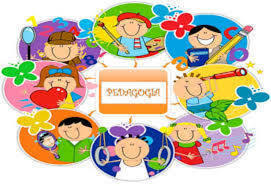19519463
Copyright and Patents Mind Map
Description
Mind Map by Iron flower 1989, updated more than 1 year ago
More
Less
|
|
Created by lhunter792
about 11 years ago
|
|
|
|
Copied by Andrea Leyden
about 11 years ago
|
|

|
Copied by Iron flower 1989
over 5 years ago
|
|
Resource summary
Copyright and Patents Mind Map
- To protect
the rights
of those
who create
and
produce
material
based on
original
ideas
- Intellectual
Property
Annotations:
- Council Directive 92/100/EEC of 19 November 1992 on rental right and lending right and on certain rights related to copyright in the field of intellectual property
- Avoids higher prices
for those who but legally
and encourages
software houses to be
innovative
- Intellectual
Property
- Copyright
Annotations:
- Limitations imposed by copyright When you buy software, for example, copyright law forbids you from: giving a copy to a friendmaking a copy and then selling itusing the software on a network (unless the licence allows it)renting the software without the permission of the copyright holder
- Comes into
effect
immediately as
soon as
something is
'fixed' in
someway
- No official register for copyright, but
it is a good idea to mark work with
the copyright symbol, your name
and the date
- Type of work protected
- Original literary works
Annotations:
- Song lyrics, manuscripts, manuals, computer programs, commercial documents, leaflets, newsletters and articles etc.
- Original dramatic works
Annotations:
- Plays, dance, etc.
- Original musical works
Annotations:
- Recordings and score.
- Original artistic works
Annotations:
- Photography, painting, architecture, technical drawings/diagrams, maps, logos, etc.
- Published editions of works
Annotations:
- Magazines, periodicals, etc.
- sound recordings
Annotations:
- May be recordings of works, e.g. musical and literary.
- films, including videos
Annotations:
- Broadcasts and cable programmes.
- podcasts/
broadcasts
- Original literary works
- Does not protect
ideas, it protects the
way in which it is
expressed
- Website copyright conditions
- Copyright also
covers the content
on websites
- copyright information
often shown in the
'conditions of use' or
'copyright statement'
- Copyright
statements might
be attached as a
footnote to
electronically
stored materials
and school web
pages.
Annotations:
- The vast majority of websites have a copyright notice in the footer. Most designers do this as routine on all websites they design.
- Copyright also
covers the content
on websites
- Software piracy
Annotations:
- Prevention of software piracy Software companies take many steps to stop software piracy: An agreement between the company that developed the software and the user must be agreed before the software is installed. This is called the license agreement and covers copyright.Certain pieces of software require a unique licence key to be entered before the installation will continue.Some applications or programs will only run if the media (CD / DVD) is in the drive. Some applications or programs will only run if a special piece of hardware called a dongle is plugged into the back of the computer.
- involves the illegal copying of computer software.
- Individuals
borrowing
CDs or
software
and
putting it
on their
own
computer
- Professional criminals making copies in bulk
and selling them through illegal outlets
- Individuals
borrowing
CDs or
software
and
putting it
on their
own
computer
- End User
License
Agreement
(EULA)
- Purchaser does not 'own'
the software but has
purchased the right to
use it
- Single User
- can only be
loaded onto
one machine
- can only be
loaded onto
one machine
- Multi User
- bought for a certain
number of users
- bought for a certain
number of users
- Site license
- bought for
everyone on
that that site
or in an office
to use the
software.
- bought for
everyone on
that that site
or in an office
to use the
software.
- Purchaser does not 'own'
the software but has
purchased the right to
use it
- Copyright
issues
- Technical solutions -
giving each copy of
the software a digital
signature
- Education - to alert people to the
indirect costs that resulted from
software piracy
- Abandon copyright -
software should be seen as
'public good'
- Difficulties in
prevention
Annotations:
- The Act simplifies the regime of Crown copyright, that is the copyright in works of the United Kingdom government, and abolishes the perpetual Crown copyright in unpublished works of the Crown. It also creates the separate concept of Parliamentary copyright for the works of the Parliament of the United Kingdom and the Scottish Parliament, and applies similar rules to the copyrights of certain international organisations.
- many don't
see it as a
crime
- privacy laws
prevent
investigation
unless there is a
suspicion
- copying takes
place in
countries less
regulated
- Technical solutions -
giving each copy of
the software a digital
signature
0 comments
There are no comments, be the first and leave one below:
Want to create your own Mind Maps for free with GoConqr? Learn more.

